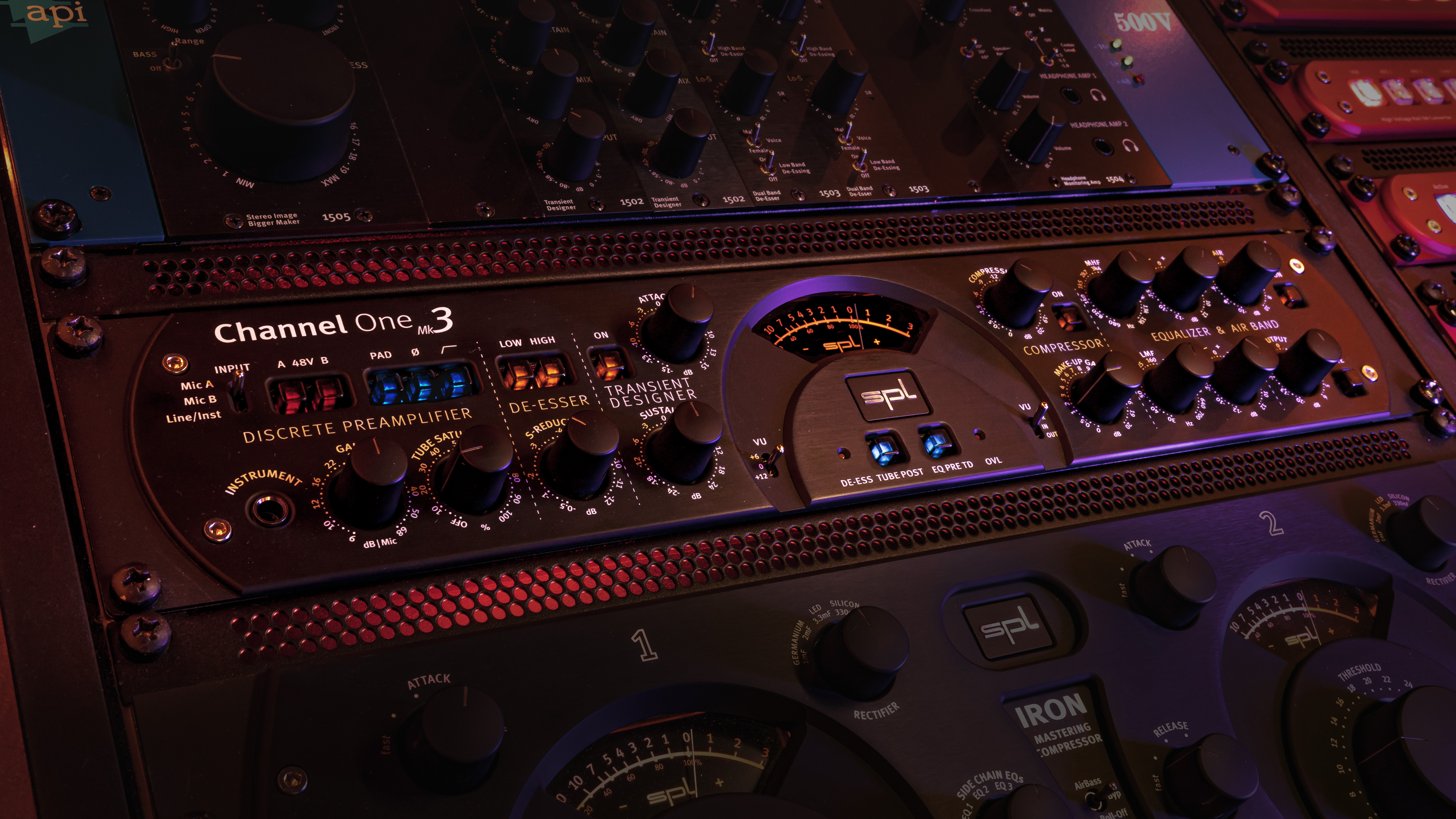Channel One Mk3
The perfect front-end for the modern producer.
For over 20 years, Channel One has been a synonym for a high-quality and extremely musical recording and mixing channel strip.
In the newest Mk3 version, this classic has been thoroughly revised and, in addition to a higher internal audio voltage (now +/-18 V) for even better, more detailed sound, a further improved preamplifier section, an integrated Transient Designer, a Tube Saturation stage and a Mic A/B comparison option for two microphones and other great features that raise the modern recording and mixing studio to a new level of quality. With de-esser, compressor and equalizer, all the important tools of a real channel strip are still on board. Whether it’s a microphone, line, or instrument signal, the Channel One Mk3 makes any source sound like a professionally recorded signal.
The new design of the SPL Studio Series perfectly highlights the sonic qualities of this 3rd generation Channel One.

Discrete Preamplifier
Channel One Mk3 is equipped with a discrete preamplifier.
Gain
The gain control can be used to adjust the preamplification. For microphone signals, a preamplification of up to 68 dB can be realized – so even really demanding microphones can show their qualities. The control range for line signals ranges between -20 dB and +16 dB. The control range for instrument signals ranges between -6 dB and +30 dB.


Comparing two
microphones?
No problem!
Channel One Mk3 offers two microphone inputs on the rear panel – Mic A and Mic B. Two microphones can be connected. This enormously simplifies the workflow. Thus, when comparing or changing microphones, it is no longer necessary to unplug them.

48V
The 48V switch activates the phantom power of 48 volts required for the use of condenser microphones. Phantom power can be activated individually for both microphone inputs!
Preamp Out –
the direct way
to reach your goal
The Preamp Out picks up the signal directly after the microphone amplifier. This signal can also be recorded on a separate track in the DAW, for example, to be on the safe side. If it is noticed after a recording session that the singer was a little louder in the perfect take and therefore hits the compressor too hard, this incorrect setting can still be changed afterwards. The signal recorded for safety can later be played back into the Channel One Mk3 via the Line In and be processed there with Tube Saturation, Compressor or other tools.


Analog plugin
Channel One Mk3 offers the possibility to process line signals. This means that sources with line level, such as an analog signal from an audio interface, can be processed with de-esser, compressor, limiter and equalizer and then be recorded again. In this way, Channel One Mk3 becomes an “analog plugin” within an insert of a DAW.
Instrument input
The low-noise instrument input is located easily accessible on the front.


PAD
The PAD switch attenuates the signal of the microphone input by 20 dB, so that even very high levels can be processed with the Channel One Mk3. This is the case, for example, with loud percussion or brass recordings.

ø
The phase reverse function reverses the polarity of the signal. After pressing the switch, the phase is reversed by 180°.
Tip:
We recommend checking the correct polarity before recording and correcting it if necessary. The phase inversion function can be used, for example, to correct a headphone monitor signal that may be out of phase. A voiceover artist, for example, hears himself through the headphones and simultaneously through the bones in his head. Phase inversion will cause an unnatural sound, and even minimal variations in distance to the microphone will cause drastic variations in the sound. Phase inversion can be applied to the microphone, line and instrument inputs. In general, you can always just try out whether a phase reverse has a positive effect on certain signals in the mix.

Highpass filter
A highpass filter with 6 dB per octave reduces impact noise below 80 Hz. This filter can be used for both preamplifiers.
Included Premium Lundahl Transformers

Lundahl Transformers
The Sonic Aspects
Transformers are used as an alternative to electronic balancing stages in the inputs and outputs.
Transformers can be found in many classics of audio engineering. They make the bass and fundamental tines rounder and give it a little more punch. The high and overtone range sounds a bit silkier and more present.
We find transformers to be advantageous, especially for voices. For highest precision and speed in signal transmission (transient processing), however, electronic stages are better suited. The bottom line is that it is a question of taste and application.
In the Mic Preamplifier
In the case of preamplifiers or channel strips, the 2161 input transformer, which is specially designed for microphone inputs, provides an additional gain of up to 14 dB (depending on the microphone), which must then be added to the scaling.
This relieves the microphone preamplifier. Since the transformer ratio passively increases the level, no noise is added. Therefore, the input transformer is more important than the output transformer in preamplifiers.
However, it is only when both transformers are fitted that all positive sonic aspects are achieved – as well as increased operational reliability.















